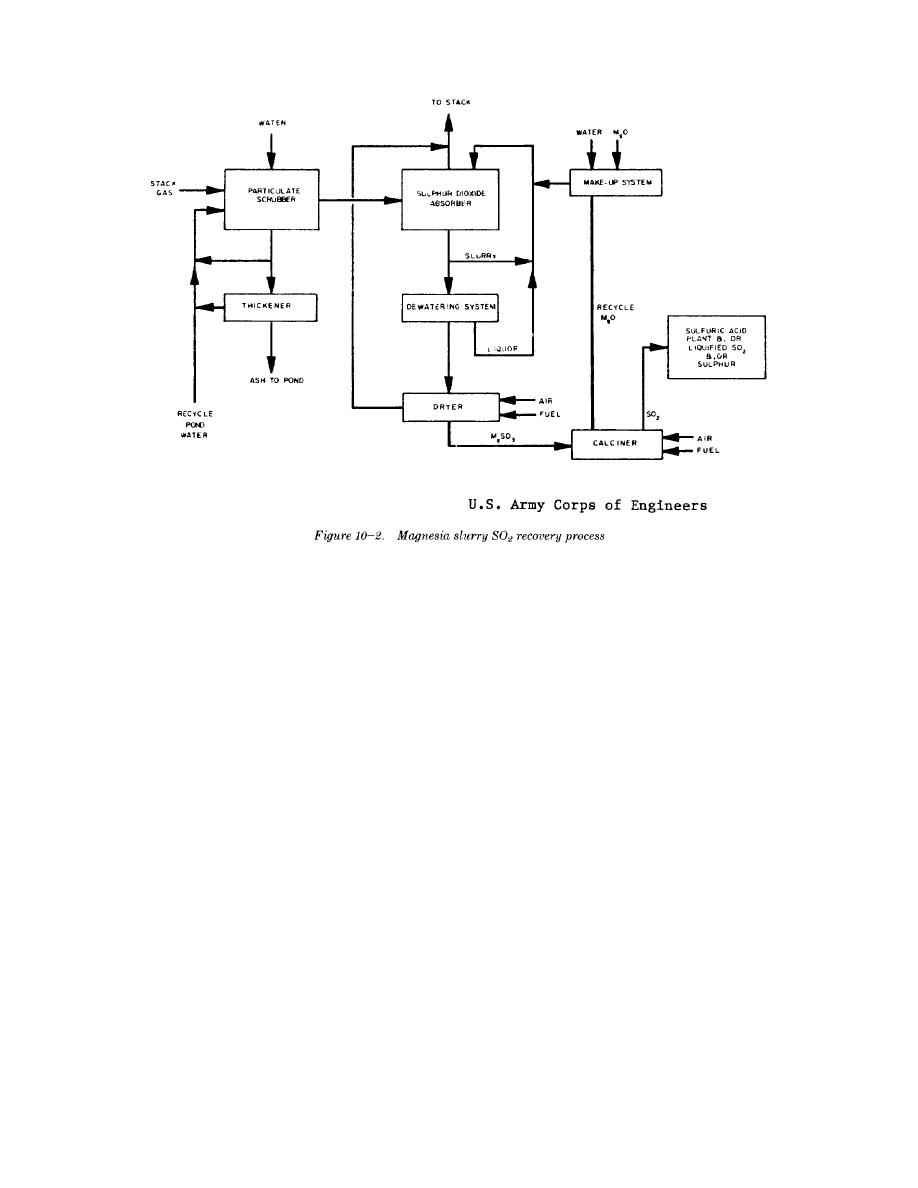
TM 5-815-1/AFR 19-6
with a solution of sodium carbonate or sodium hydrox-
scrubber under controlled reactor conditions.
ide to produce a solution of dissolved sodium sulfur
The principal advantages of the dual alkali
salts. The solution is then oxidized to produce a neutral
system are:
(a) Scaling problems associated with direct
solution of sodium sulfate. Because it is a throwaway
process, the cost of chemicals make it an unattractive
calcium-based scrubbing processes are
SOx removal process when burning high sulfur fuels
significantly reduced.
(b) A less expensive calcium base can be
(greater than 1 percent).
t. Dual alkali sodium scrubbing.
used.
(c) Due to high solubility and concentration
(1) The dual alkali SOX removal system is a
regenerative process designed for disposal of
of active chemicals, lower liquid volumes
wastes in a solid/slurry form. As shown in
can be used thereby lowering equipment
figure 10-6, the process consists of three
costs.
(d) Slurries are eliminated from the
basic steps; gas scrubbing, a reactor system,
and solids dewatering. The scrubbing system
absorption loop, thereby reducing
utilizes a sodium hydroxide and sodium
plugging and erosion problems.
(e) A sludge waste, rather than a liquid waste,
sulfite solution. Upon absorption of SO2 in
the scrubber, a solution of sodium bisulfite
is produced for disposal.
(f) High SO2 removal efficiency (90% or
and sodium sulfite is produced. The scrubber
effluent containing the dissolved sodium salts
more).
u. Absorption of SO2.
is reacted outside the scrubber with lime or
limestone to produce a precipitate of calcium
(1) Activated carbon has been used as an absor-
salts containing calcium sulfate. The
bent for flue-gas desulfurization. Activated
precipitate slurry from the reactor system is
carbon affects a catalytic oxidation of 502 to
dewatered and the solids are deposed of in a
SO3, the latter having a critical temperature of
landfill. The liquid fraction containing
425 degrees Fahrenheit. This allows absorp-
soluable salts is recirculated to the absorber.
tion to take place at operating temperatures.
Double alkali systems can achieve efficiencies
The carbon is subsequently regenerated in a
of 90 - 95% and close to 100% reagent
separate reactor to yield a waste which is used
utilization.
in the production of high grade sulfuric acid,
(2) This system is designed to overcome the
and the regenerated absorbent. There are
inherent difficulties of direct calcium slurry
serious problems involved in the regeneration
scrubbing. All precipitation occurs outside the
of the absorbent, including carbon losses due
10-6


 Previous Page
Previous Page
